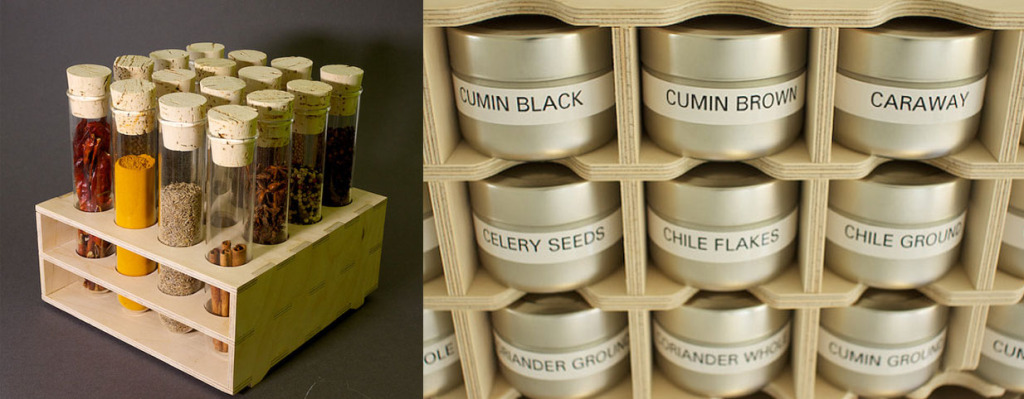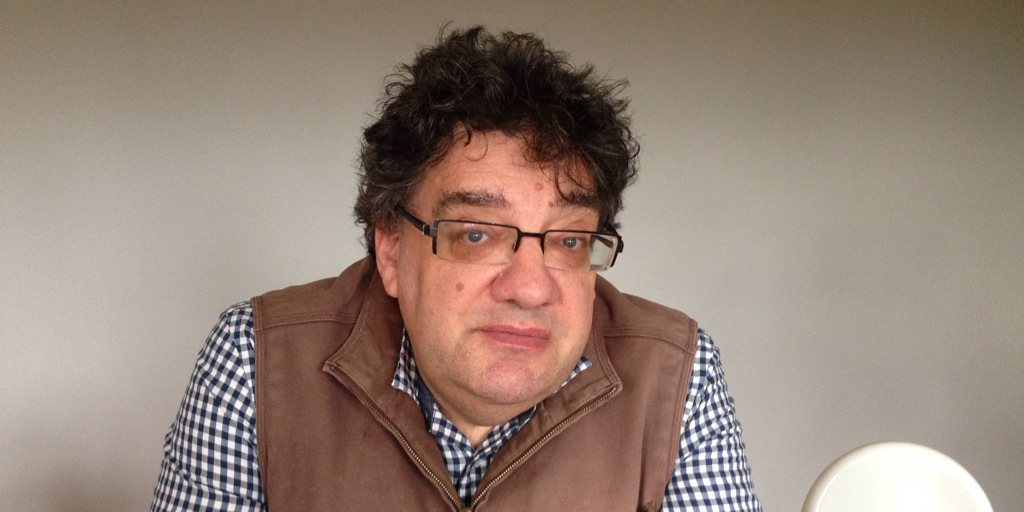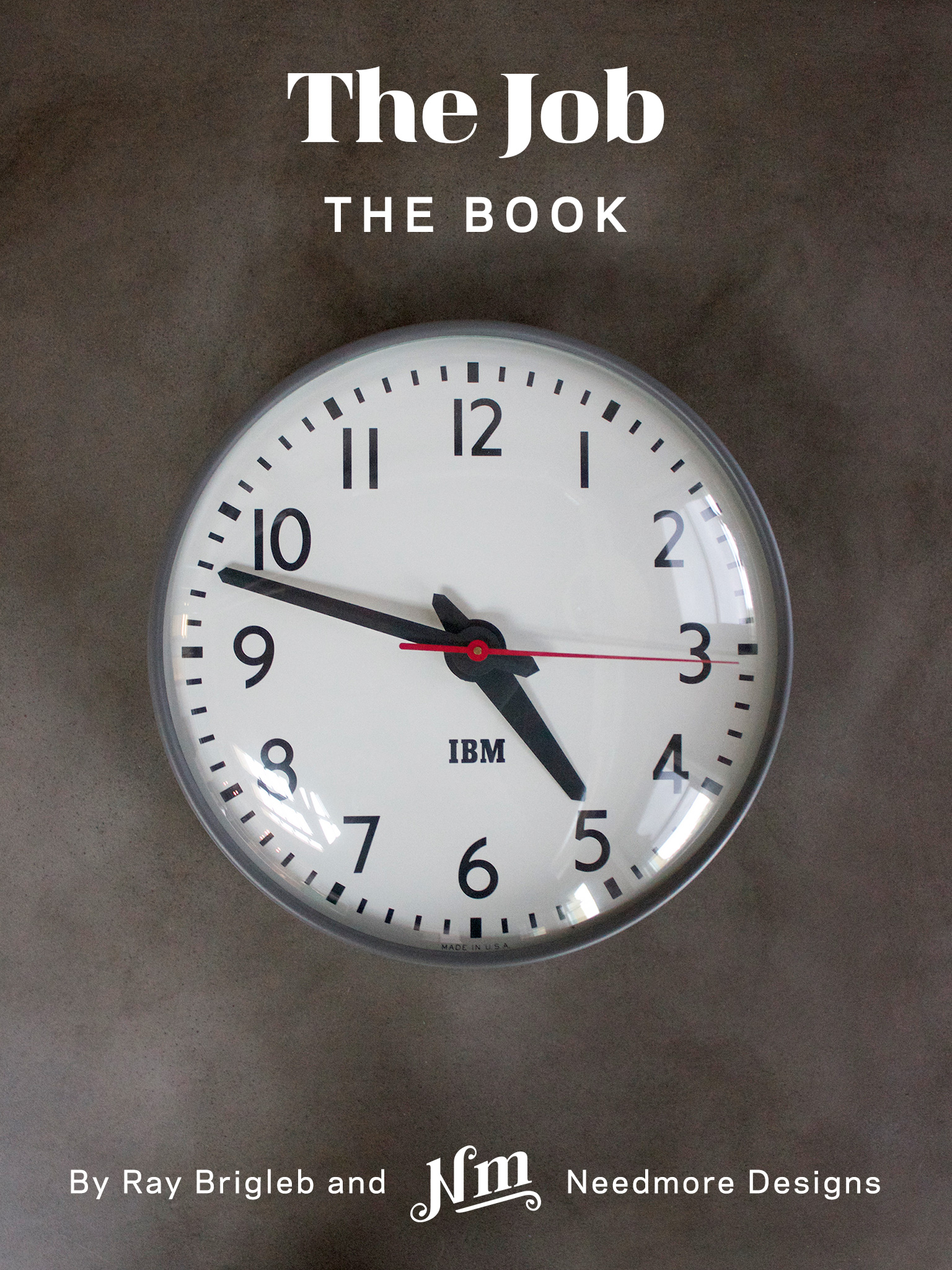
Thayer Gignoux is owner and designer of Storage Studies, a plywood storage business with a focus in organizing your kitchen spices.
- Storage Studies
- Storage Studies on Etsy
- Storage Studies on Pinterest
- Storage Studies on Food 52
- Bollywood Theater
The Interview
- Ray:
- Hi there.
- Thayer:
- How are you?
- I’m good. How are you doing today?
- Very well.
- You make, your company is Storage Studies. You make storage solutions out of wood essentially.
- Yes.
- Is that how you describe it?
- Yeah.
- Okay. How did you get interested in doing that? Where did this idea come from?
- I’ve always really liked plywood for some reason and I had worked as a computer aided design drafter for a while and at some point decided that it would be interesting to make Storage Studies. I’m a very disorganized person myself.
- So you are the target market.
- Yeah.
- What is unique about what you do? Essentially do you still use sort of, what kind of equipment do you use to make this? This is not something you’re just taking a saw and cutting pieces of wood.
- No, I became aware of these routers which are under computer control which is something that I more or less understand and I felt that if the woodworking aspect of the thing could be outsourced to a machine then I might be able to do it. Because I never felt I was a good carpenter or anything like that.
- Uh huh.
- As it turns out you still need to have a few of those hands on skills but essentially this machine takes a full sheet of plywood and can cut any shape, any arbitrary shapes very precisely quite quickly.
- Okay. Then essentially you just kind of assemble those into a product. So you have to, they come with a blueprint, run it through a machine and then put it all together.
- Yeah. You can either design the shapes by hand or I’ve also written some software which allows you to specify dimensions and the shapes are drawn based on the dimensions.
- Is this, when you’re coming up with a product, is it, do you just do it in like a … Pardon my ignorance about 3-D software but do you use something like AutoCad or something like that?
- Yes, it’s called Rhino 3D which is similar to AutoCad and is more popular among jewelers and furniture makers, things like that. Whereas AutoCad is aimed more at the architectural world but they are quite similar.
- Is that what you call, I saw mention of CNC woodcutting is that what that is?
- Yeah.
- What does that stand for?
- Computer Numeric Control.
- Oh okay. Okay. Numeric. Tell me about your, for instance, tell me about your Flavorlab Spice Rack. This thing, for the listeners at home, is kind of like a rack that holds almost test tubes with spices plugged in by a cork?
- Yeah, it’s just the largest size test tube that I could find in a very simple rack so that you can obviously access the spices easily and see what they are based on visually. And just had fun making a simple rack that would contain all of them.

A few of Thayer’s storage products.
- It seems like that would be a popular product because it’s such a, so unique and it’s kind of like a conversation piece.
- Interestingly I’ve sold more in Europe and Australia than I have in America.
- That is interesting.
- Interestingly too I’ve seen the idea of spice racks made from test tubes is quite popular on Etsy. Unfortunately most of those test tubes are the regular test tube size which is not really big enough to be a useful spice container.
- A bunch of inferior knock-offs on Etsy, huh?
- I think the test tube spice storage was sort of a medium which I certainly did not originate but so there are a lot there, yeah.
- Yeah. I was reading through your lovely website and I think some of the writing on it is actually kind of funny, actually reflects your sense of humor. Do you do a lot of writing yourself?
- Not really.
- No? Okay. Do you have a background in writing at all? It seems very humorous, very …
- I used to edit translations of computer manuals.
- Oh wow, okay.
- That’s ..
- I wasn’t expecting that. That’s not what your copy sounded like. I think we originally met through a mutual friend and past podcast guest Jason Sturgill. You made stairs for him, is that right?
- No, he has a very interesting mid-century house and had found a shelf and cabinet design in a book about mid-century design and I sort of knocked it off for him essentially.
- Then it was installed in his staircase or?
- No, it’s right in his living room.
- Okay. I don’t know why I’m thinking staircase here. Do you do a lot of cooking?
- I do.
- Is this where the idea of the spice racks came from?
Yeah, actually I realized I needed spice storage myself and it took me only one or two years after I build it for myself to realize that maybe there could be a wider audience for such a thing.
- Yeah. Do you have a lot of spices in your kitchen?
- Seventy.
- Seventy.
- Yeah.
- How the hell do you know that number?
- Well plus or minus.
- Okay. You have that much shelving so you just know …
- Yeah.
- Okay. Do you worry about, do you use them often, do spices like these go bad?
- Spices if they’re ground up go bad. There are a few things you can do to keep them fresh. Keep them sealed obviously, keep them in the dark, light is an enemy of spices. Yeah, they do go bad and that’s a problem.
- Do you put dates on them?
- That would be organized.
- So no? Do you have a favorite or is there a spice that’s like the most under appreciated spice?
- Favorites, well saffron is right up there.
- Saffron is a nice spice.
- Yeah. Not a favorite per se. There are a few spice mixtures that I’ve recently become aware of that I like. There’s something called Berbere from I believe it’s Ethiopia which is a little bit sharp. It’s got an interesting flavor. There’s another mixture from Morocco called Ras el hanout which is lovely. But no favorites. Even the, even black peppercorns can be sort of exploited in interesting ways.
- The much maligned black peppercorns.
- Yeah.
- You know for me it’s Italian. I’m joking. I’m remembering back in my college days when that was the go to spice, but no. That’s interesting to hear you name those spices. I remember when we first met you turned us on to, how do you say that, Nong’s Khao Man Gai food cart.
- Oh right, yeah.
- Do you remember that, do you still go there? It was amazing. Is it Korean?
- No, she makes a Chinese chicken dish, it’s great.
- Yeah. Amazing. Do you have any other, do you still go to food carts much, are there some of your favorites in Portland right now?
- Food carts, no. I cook at home. I’m getting old.
- Yeah.
- Prices seem to be too high.
- You’re getting old. This was like a year ago.
- Not it wasn’t actually, it was quite a while ago.
- Was it?
- When we did this.
- Okay.
- When I go out I have too much sticker shock so I try to cook at home essentially.
- We passed you the other night on Division, where were you going then?
- We were going out to the new Bollywood Theater on Division.
- Did you? How did you like that?
- That was terrific.

Bollywood Theater on SE Division. Photo Credit Oregon Live.
- Had you been to the other one?
- Yeah.
- Okay. Similar?
- They seem identical, yeah.
- Yeah, yeah. Boy, Division is pretty crazy these days.
- Yeah it’s going to get even crazier isn’t it when all those building, all those condos …
- Ton of those opening up.
- Yeah.
- It’s weird. Do you have any exciting projects you’re working on in the future in terms of Storage Studies?
- There are a lot of ideas percolating. Nothing quite firm as yet.
- How do you come up with a new, is it just a lot of trial and error? Come up with an idea you just try to figure out how in the heck to build it?
- That’s interesting. There is the phenomenon of the solution in search of a problem which I’m quite familiar with. I really try and winnow all ideas down to the ones which really make sense and are really useful.
- Storage Studies, this is what you do full time, is your thing.
- Yeah.
- Okay.
- Yeah.
- How much time on an average day or week do you spend in front of that router?
- The router is, it’s not fast but it’s probably one of the less time consuming parts of the thing.
- Okay, what takes the most time of doing that stuff for you.
In production you know, gluing things up and sanding them and bringing them to a high level of finish, that’s a very open ended process that will take as much time as you care to give it. A big challenge is to get a consistent level of quality without resorting to just hours and hours getting it there and I find that as time goes on I become more critical of things and some spice racks that I made six months ago might not pass the quality.
- Might not pass muster anymore.
- Exactly, yeah.
- Do you ever visit friends or people who have something that you made a few years ago and …
- Oh yeah, it’s deeply embarrassing.
- Do you keep sandpaper in your pocket or something? Maybe your business cards should have sandpaper on the back for little touch ups.
- That’s a good idea.
- That’s actually is a good idea. That would definitely make an impression. It would be hard to keep in your wallet though.
- Yeah.
- Cool. Thank you so much for taking the time to talk to me Thayer.
- Thank you even more for thinking that I might have something interesting to say.
- Cool.

